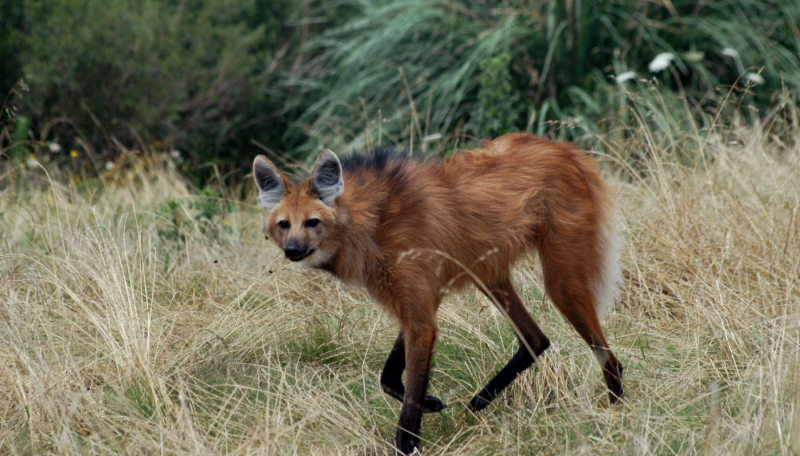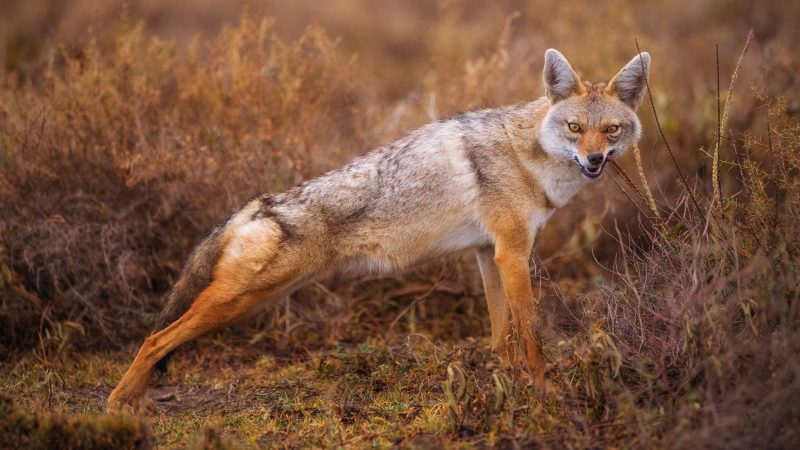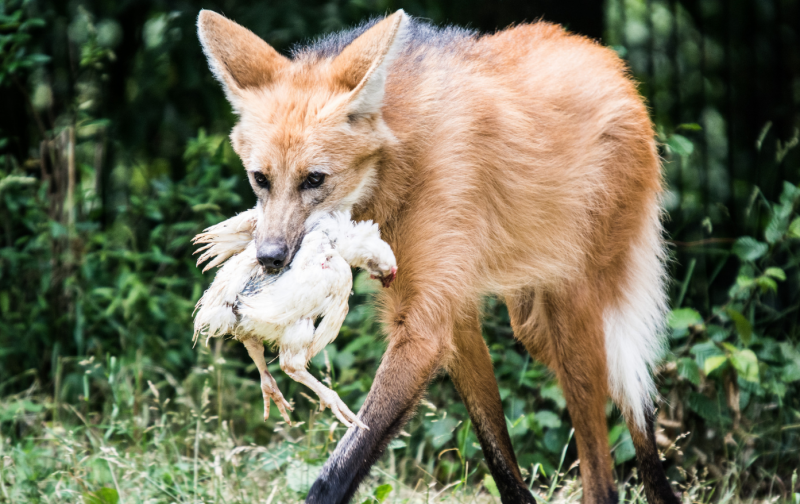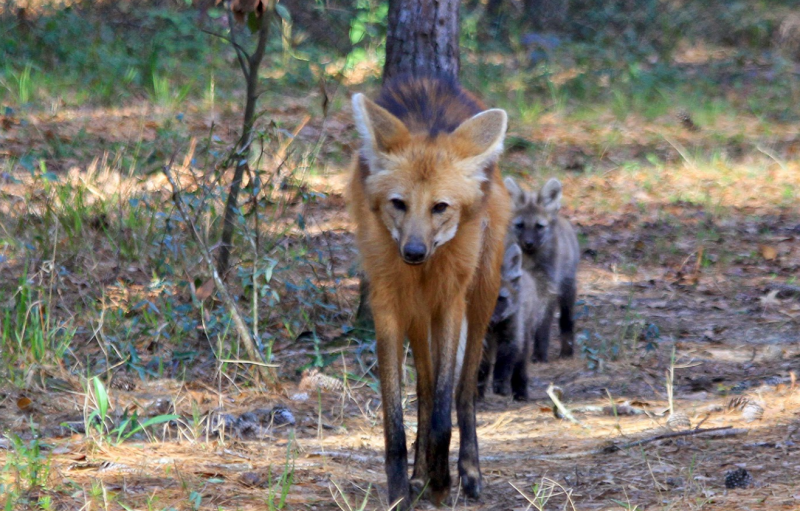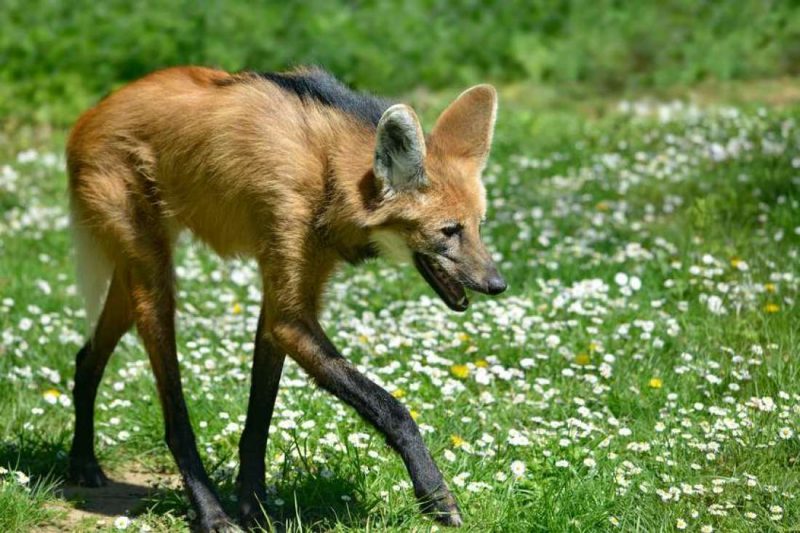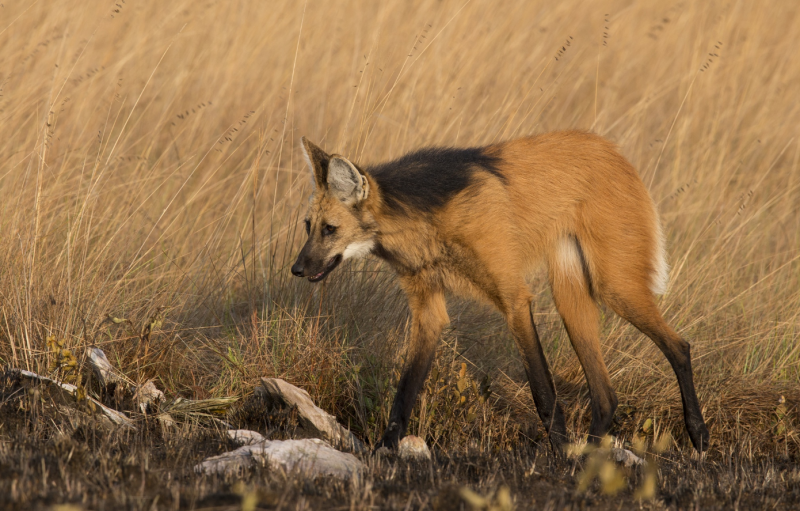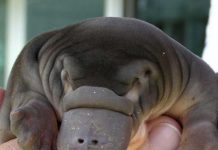A bright representative of rare and unusual creatures of nature is the maned wolf (the alternative name is aguarachay, guara). It is distinguished from its relatives by the canine family by its unusual withers and original body structure. Where does this unique creature live and what are the features of his lifestyle?
Material Content:
Description of the Maned Wolf
In the guar (lat. Chrysocyon Brachyurus) it is very difficult to recognize the wolf, although, of course, some features of these predators in its appearance can be traced. In addition, it has something from a dog and a fox.
The maned wolf is not very large: the height at the withers is 60-90 cm, and the body length is just over 1 m. Adult individuals can weigh about 25 kg.
The guar’s face is sharp, reminiscent of a fox, the neck is long, the ears are protruding and large. The disproportionality of the body of the predator is due to the short body and long thin paws. The color of the wolf is very unusual: brown on the belly, it is gradually replaced by yellow, and on the mane the hairs are completely reddish.
The coat of the maned wolf is thick, soft. The hairline along the back is longer than in other areas and forms in the scruff. At the slightest danger, the animal is able to lift it almost vertically. Because of this "decoration", the wolf was endowed with its name.
Habitat and lifestyle
Aguarachai are predominantly single, animals are grouped in pairs exclusively in the mating season. Unlike most wolves, they do not form flocks. Guar activity mostly occurs in the evening and night. In the afternoon, animals rest in the den or in the grass.The home of the maned wolf is located under fallen trees or in abandoned burrows of other animals. During the day, wolves can travel extremely short distances. In the evening, they begin to patrol their territory.
Did you know? Guar doesn’t need a company even in hunting, therefore they also get food one by one. Thin long limbs help them track prey even on top of tall grass. Big ears distinguish sounds even in the dark. For maximum visibility, the guar can be raised on its hind legs.
Males are usually more active than females. With the onset of the mating season, animals form pairs, each of which occupies its own site, which is subsequently marked with excrement by wolves. Even during the mating season, the guars keep apart, hunting, eating and patrolling the territory one by one. Wolves forced to live in captivity are more socialized and try to stick together. In this case, the males begin to build a hierarchical system.
A maned wolf lives in the countries of South America. This animal lives mainly on flat terrain. In addition, these predators can live in forests and hills, less often in swamps. In the highlands it will not be possible to track the guar.
Animal diet
A maned wolf is a predator, like almost all of its brethren. However, his diet is more diverse and, in addition to the meat of slaughtered animals, also includes plant foods. The wolf’s menu includes rodents, fish, insects, mollusks, birds and their eggs. If the guar lives near the person, he can carry out raids on the farm, attacking chickens, lambs, pigs.
A guar wolf cannot hunt large prey - it is hindered by a small volume of lungs and weak jaws.
Breeding and offspring
The period suitable for guar propagation is mid-autumn and winter. Puppies are born in June-September.
The female creates a den in nooks covered with vegetation. She wears babies 60-66 days, after which she gives birth from 1 to 7 blind puppies, whose sizes do not exceed 20-30 cm, and weight - 400 g.
The color of the puppies is dark gray with a large white tip of the tail. The ears of young wolves begin to stand a month later, and the coat acquires a typical coloring for adults 3 months after birth. During the first month, the she-wolf feeds the cubs with milk, then semi-digested food is included in their diet, which the mother belches for her cubs.
It is interesting! Guar males and females take care of the offspring together. The wolf father also takes part in the upbringing of young animals, protecting the female and the cubs from uninvited guests, and earns food. In addition, the male plays with the children and teaches them to hunt.
Young wolves are considered sexually mature, reaching a year, but only begin to breed at the age of 2 years.
Natural Enemies of the Maned Wolf
To date, scientists have not been able to detect aguarachai in the nature of natural enemies. It is believed that the greatest damage to the population of these animals is done by humans. Unwilling to come to terms with guar attacks on livestock, people massively shoot these predators. In addition, these wolves are prone to plague, and therefore die en masse. Another problem is the lack of territory. Every year an increasing number of plains are used for arable land, and this deprives the guar of its typical habitat.
A large number of maned wolves also die in the traps of poachers or under the wheels of cars. In addition, some South American natives still hunt for the eyes of the guar, considering them a kind of talisman of good luck.
To date, no cases of aguarachay attacks on humans have been recorded.
It is interesting! Guara is listed in the International Red Book and is considered an animal whose population is in danger. In the past few decades, their number has decreased by about 1/10. Worldwide, there are no more than 10,000 maned wolves.
The average life expectancy of a guar is 10-15 years.
Interesting facts about the canine family
The maned wolf is a vivid representative of the canine family, characterized by multiple interesting features.
Watching them, scientists found out some interesting details:
- A maned wolf is a relict species of animals that has survived since the Pleistocene (era of mammoths).
- Gaura is very fond of seasonal berries and often includes strawberries and strawberries in their menu during their ripening.
- The voices of the male and the female are different - the sounds made by the wolf are lower, the she-wolves communicate in high tones, the wolves are completely screaming.
- Despite the presence of long limbs, maned wolves are not very good runners. On the contrary, these animals differ in some slowness.
Aguarachay or the maned wolf is an amazing creature, with its appearance and habits resembling several animals at once. A characteristic feature that distinguishes these creatures from fellow wolves is the tendency to eat plant foods. The number of guars is small, but because these predators are protected by environmental organizations.


